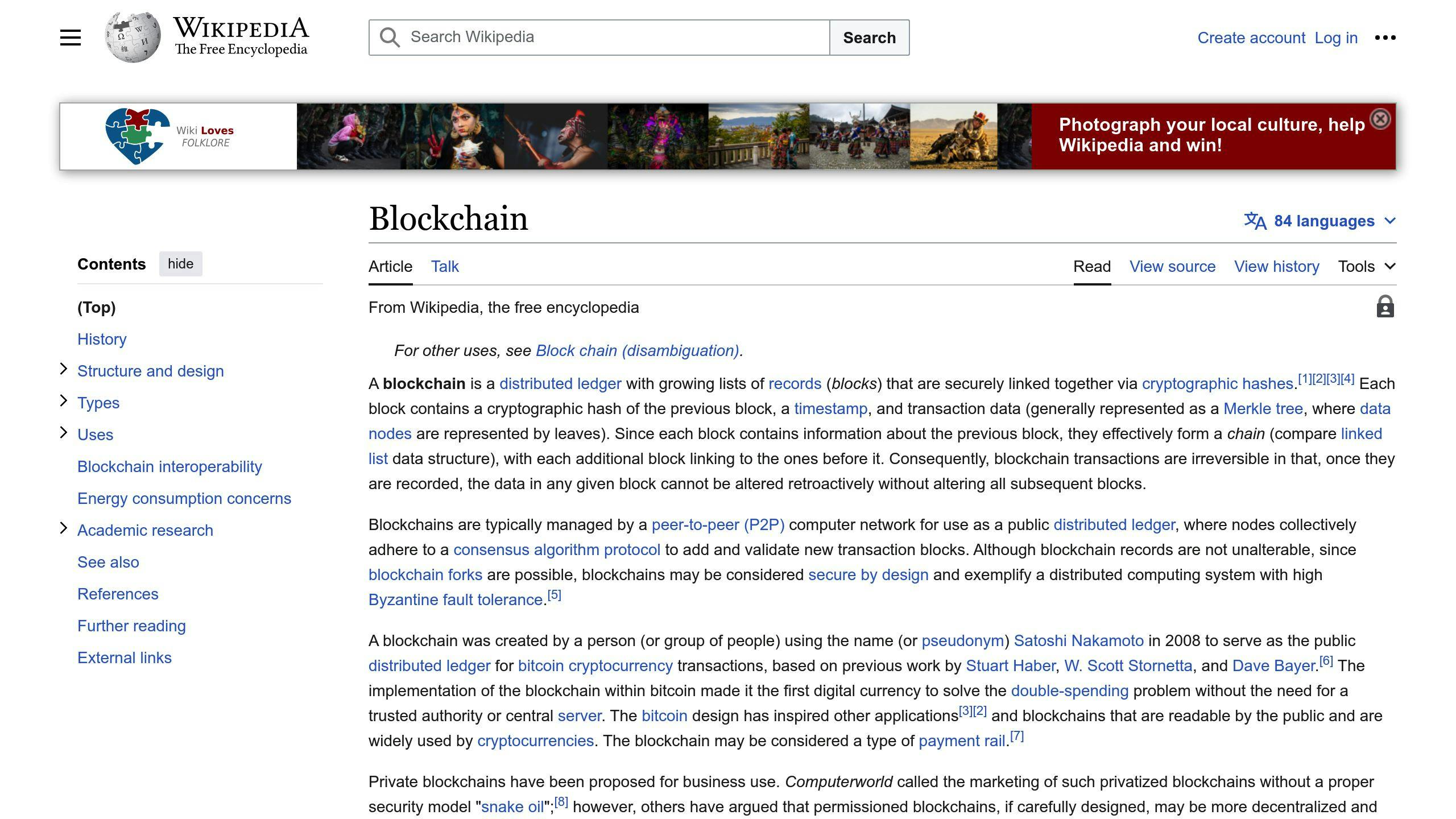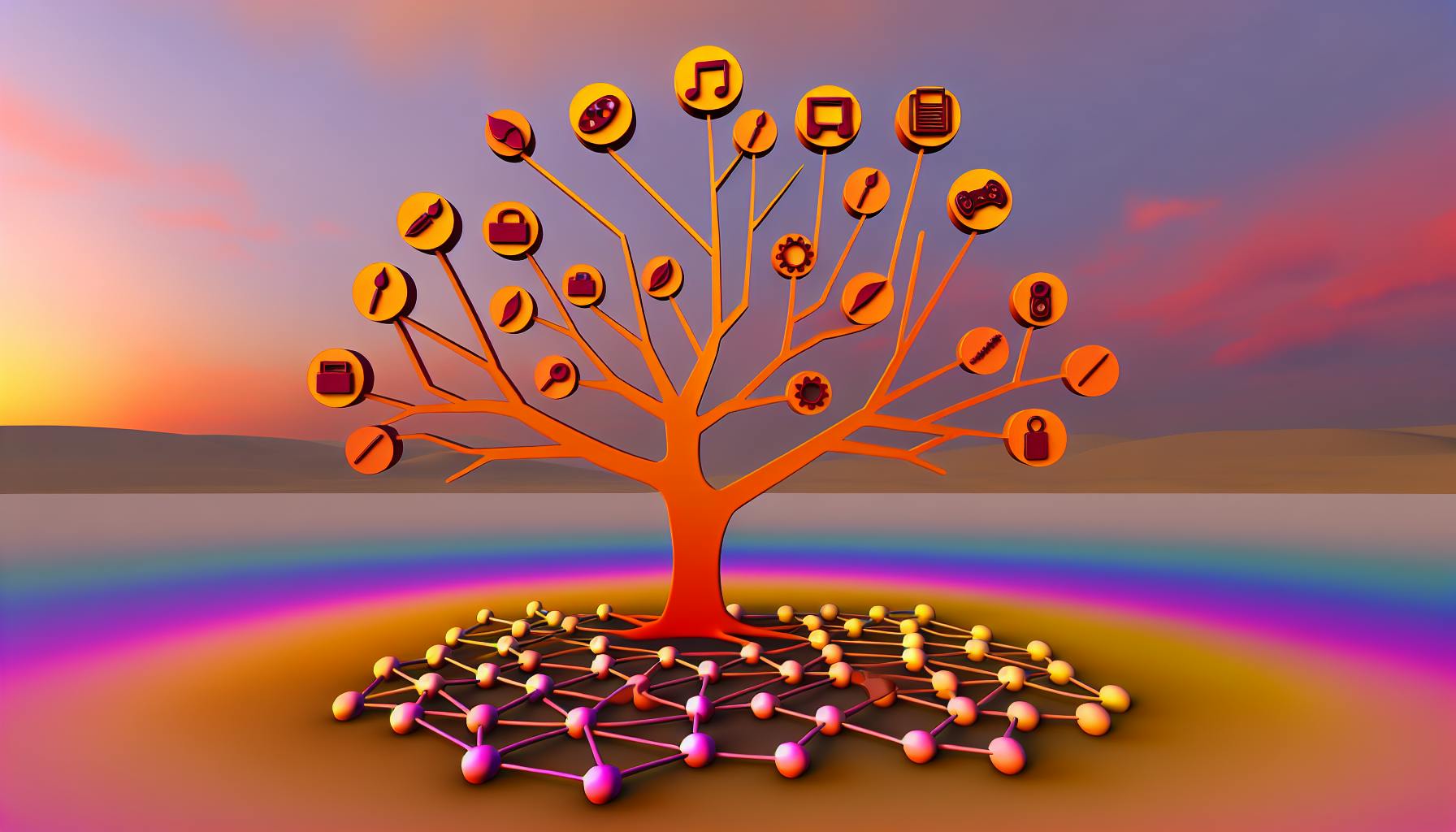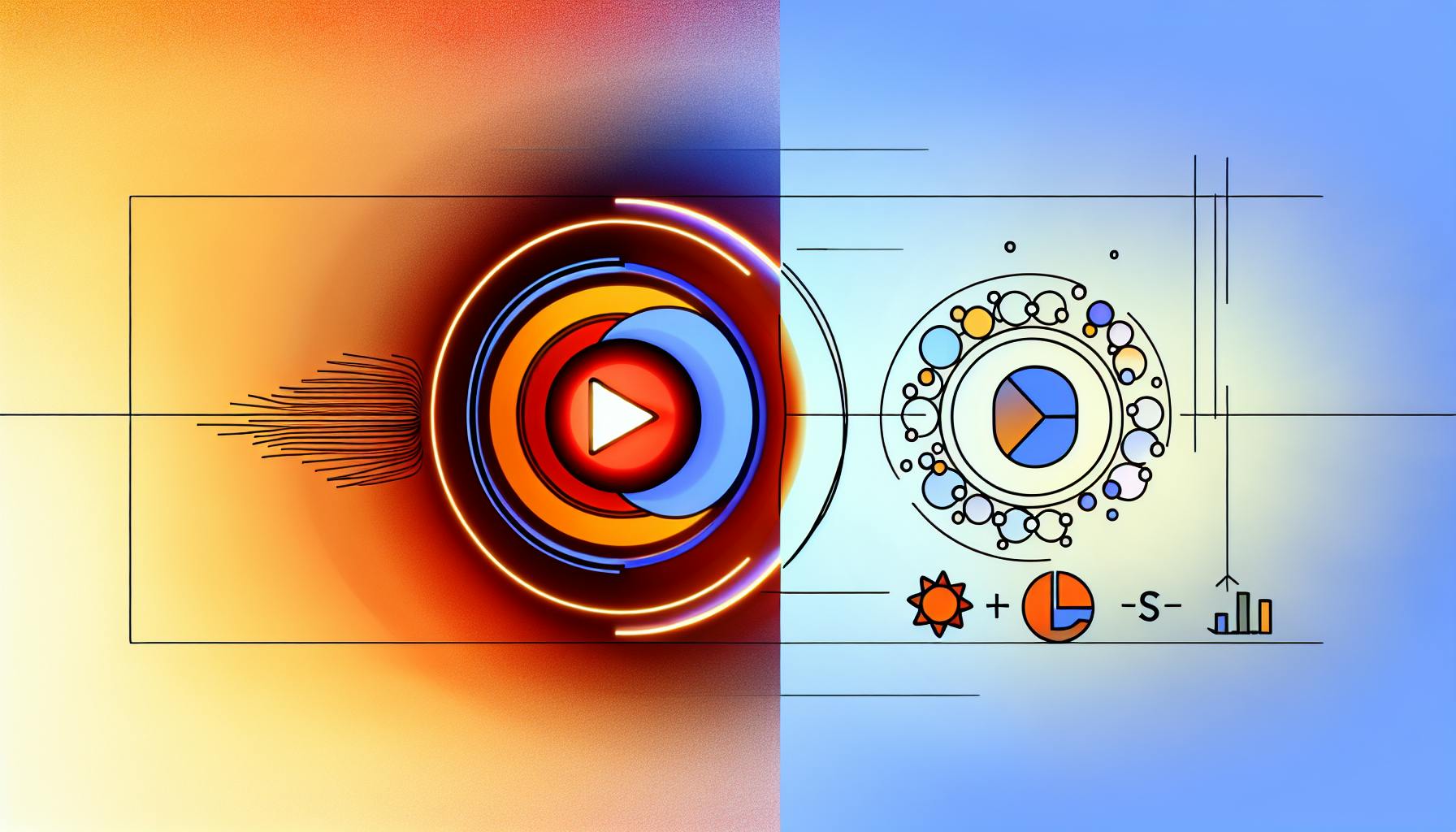Blockchain technology is revolutionizing how video creators connect with their audience, control their content, and monetize their work. Here's what you need to know:
- Blockchain video streaming allows direct, decentralized sharing of videos, cutting out middlemen and ensuring fair payment.
- Setting up involves creating a digital wallet and joining blockchain-based video platforms like DTube, LBRY, or Livepeer.
- Monetization methods include ads, tips, subscriptions, and pay-per-view, with immediate and transparent payments.
- Performance tracking is detailed, offering insights into viewer demographics, traffic sources, and engagement metrics.
- Ownership and control are in the hands of creators, with the ability to make videos into NFTs for further monetization options.
This approach offers a direct connection to your audience, multiple revenue streams, immediate payouts, and detailed analytics — all while maintaining full control over your content.
Understanding Blockchain Video Streaming

With blockchain video streaming, videos go directly from one person to another, instead of being stored on a big company's server. This means creators can reach their audience directly and get paid without middlemen. Blockchain makes everything open and honest, protects your videos, and lets you sell them as special digital items.
Setting Up a Wallet and Account
First, you need a digital wallet to keep the money you make. You can use apps like MetaMask, TrustWallet, or Coinbase Wallet. Then, sign up on video platforms that use blockchain, like DTube, LBRY, or Livepeer. Just follow the steps to join, link your wallet, and set up your channel.
Uploading and Sharing Videos
When you put up a video, make sure the title and description are clear and use words that help people find your video. Tag your video with words that describe what it's about. Share your video on social media and in groups that like the same things you do. You can also pay to get your video in front of more people. Keep an eye on how your videos are doing and tweak your approach to get better results.
Monetizing Videos through Blockchain Platforms
Blockchain video platforms let creators make money in new ways with features like ads, tips, subscriptions, and pay-per-view. These platforms are open about how many views and clicks you get and let you have your money right away. This means you have more control over how you make money from your videos.
Enabling Advertisements
To make money from ads, creators can:
- Turn on ad settings in their account
- Pick where ads show, like before, during, or after videos
- Decide how the ad money is split (for example, 70% for the creator, 30% for the platform)
- Check ad stats like how many people saw the ad, clicked on it, and how much money you make per view
Ads are an easy way to earn money while you decide how much you want to share with the platform.
Accepting Tips and Donations
Viewers can support creators by sending them money using:
- Platform tokens - an easy way to help creators
- Cryptocurrencies - no extra fees
- A 'tip' button under videos
- A public record that shows all the tips you get
Tips encourage creators to keep making great content and let fans directly support them.
Offering Paid Subscriptions
Creators can give special content and benefits with different subscription levels, like:
- Basic - $5 a month
- Premium - $10 a month with extra content
- VIP - $20 a month with direct messages
Fans pay with platform tokens that get taken out of their account every month. Creators can set up different perks for subscribers and put some videos behind a paywall for subscribers only.
With blockchain, video creators can earn what they deserve in a fair and open way. These platforms give creators the power to decide how they want to make money.
Measuring Performance and Earnings
Viewing Video Analytics
If you're making videos on a blockchain platform, you can see detailed info on how your videos are doing. This includes:
-
Viewer demographics - Find out who's watching your videos, including their age, gender, where they're from, and what devices they're using. This info helps you make better content and figure out the best way to share it.
-
Traffic sources - Learn where your viewers found your video (like search engines or social media) so you can focus on what works best.
-
Retention metrics - See how much of your video people are actually watching. If they're not watching much, you might need to make your videos more engaging.
-
Engagement metrics - Look at how many likes, comments, and shares your videos get. This tells you if people are enjoying your content.
Keep an eye on these numbers to help plan what kind of videos to make next. Look for patterns in what videos do well to guide your future work.
Monitoring Revenue Dashboards
On blockchain video platforms, you get a dashboard that shows how much money you're making, including:
-
Overall earnings - See how much you've made in total from ads, tips, subscriptions, and more.
-
Earnings by source - See a breakdown of where your money is coming from, like ads, tips, or subscriptions.
-
Historical trends - Look at how your earnings change over time, whether that's daily, weekly, monthly, or yearly.
This info helps you understand which ways of making money are working best for you. Use this data to focus on what brings in the most income.
sbb-itb-bc761f5
Conclusion
Blockchain technology is changing the game for people who make videos. It cuts out the middlemen and big platforms, letting creators connect directly with their audience and get paid fairly.
Here's what we've talked about:
- Direct connection with your audience: You don't have to go through big companies that take a piece of your earnings.
- Many ways to make money: You can earn cash through ads, tips, monthly subscriptions, pay-per-view, and even by selling special video clips as NFTs.
- Clear analytics: You get detailed info on who's watching your videos and how they're finding them. This helps you make better content.
- Get paid right away: There's no waiting around for your money, and you don't lose a chunk of it to platform fees.
- Harder to block or take down: Because everything is spread out (decentralized), it's tough for anyone to block or remove your videos.
- You own your videos: When you turn your videos into NFTs, you have full control over them.
For video creators looking for more control and fair pay, blockchain platforms are a great option. They offer quick payments, clear stats on your video performance, and a direct line to your viewers. As blockchain technology gets better, it's set to change the way creators make and get paid for their videos.
Related Questions
Can blockchain be used for streaming?
Yes, blockchain technology can be used to create secure streaming platforms. These platforms make payments clear, help viewers get more involved, and make sure content is real. Blockchain offers new ways to handle digital rights, privacy, and agreements between many people. This builds more trust, gets viewers more involved, and makes brands more valuable.
What is the blockchain platform for content creators?
| Platform | Description |
|---|---|
| Flixxo | A platform that lets people share videos without a central control, using blockchain |
| Theta | A network that uses blockchain to make streaming better |
| Content Box | A blockchain platform for sharing and making money from content |
What is the monetization of the blockchain?
Blockchain lets creators make money in new ways. They can:
- Turn their data into digital items that can be traded
- Decide who can see their data
- Get paid automatically through smart contracts
This means creators can make money from their data.
Can videos be stored on blockchain?
Yes. Using blockchain, creators can:
- Make their videos private
- Keep them safe on networks like IPFS that don't have a central point of control
- Reach their audience directly while keeping control
This keeps video content safe and long-lasting.



